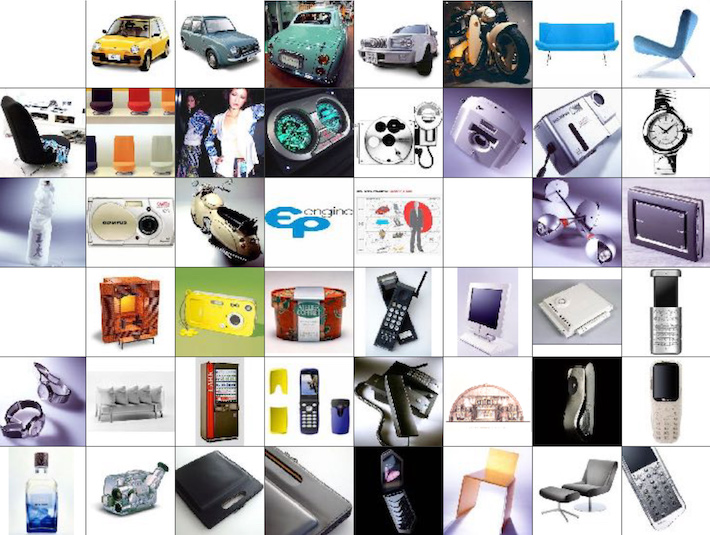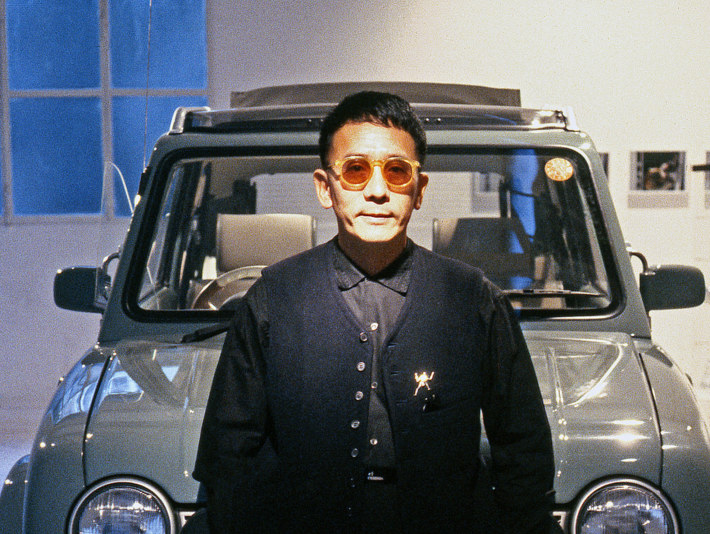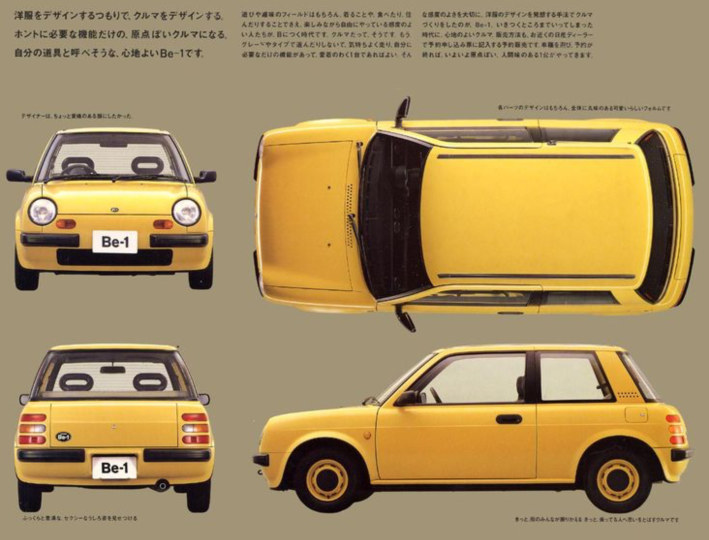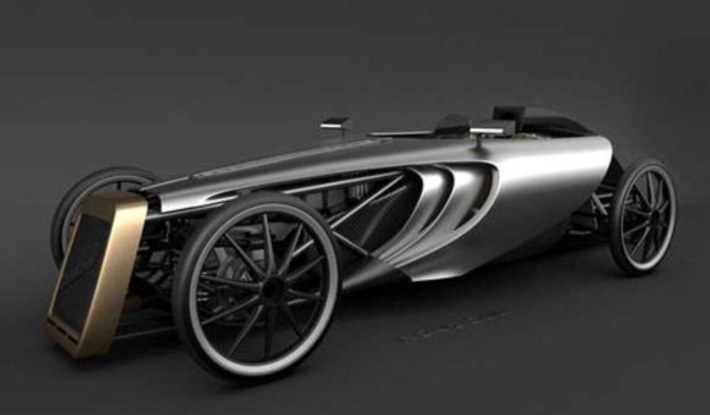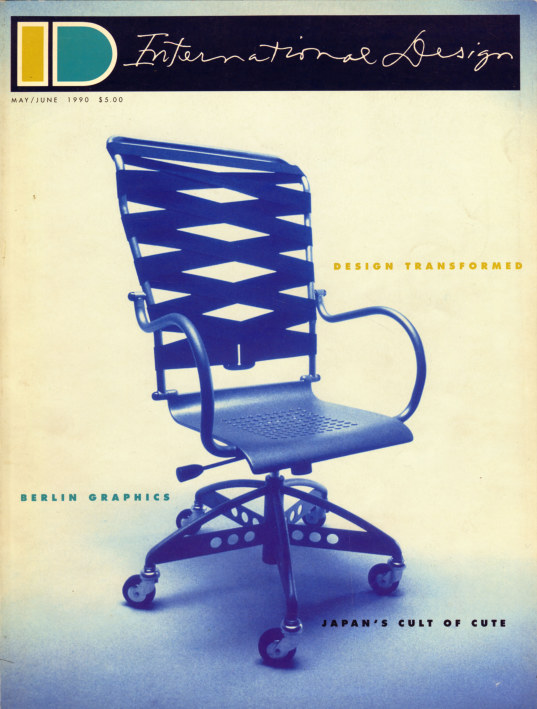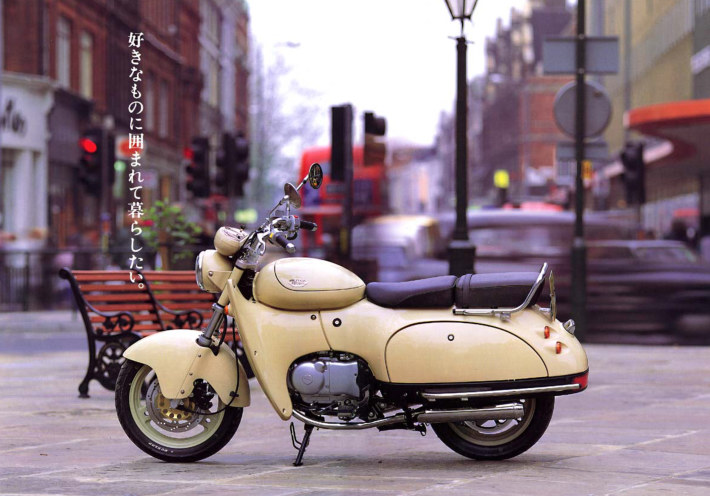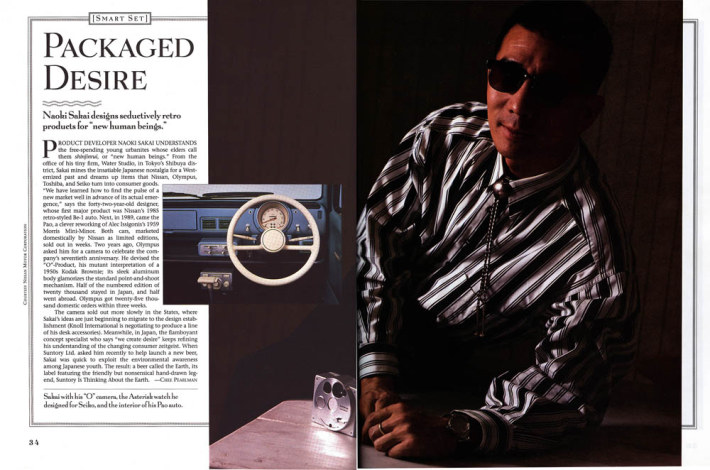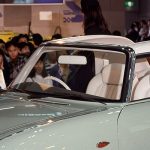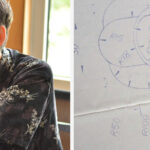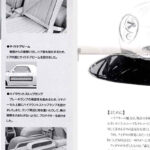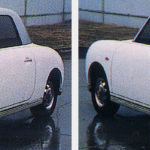Naoki Sakai – Nissan Figaro Designer Interview December 2018
Naoki Sakai (along with Shoji Takahashi) was credited with the design of the Nissan Figaro back in 1990. In December 2018 the Figaro Owners Club managed to track down Naoki via Facebook and asked him to provide more information on how the Figaro came about being designed in the first place and his involvement in the Pike projects.
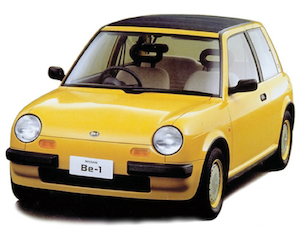
The Be-1 was the first car designed by Naoki and was an instant hit
Q1 – How did Nissan start the original Pike Project Series?
Actually, what Nissan ordered at first, was it changed during the project. At that time, Honda’s small and tall car (called ‘City’) was popular, and Nissan created a project named ‘March’ (Micra)” to compete with Honda.
Our original proposal called the B-1 (code name of Be-1) was regarded as not really appropriate for the ‘ordinary car market’; despite the concept having a strong impact and good design reputation. Then, a better-than-expected reaction at the Tokyo Motor Show pushed the project to sell 10,000 cars as a ‘Pike car’ (progressive car). Sales of Be-1 were very successful and created publicity worth as much as 30 billion yen for the Nissan brand revival.
Q2 – When you accepted the original brief from Nissan, how did you understand the brief?
At that time, I had no interest in cars and actually couldn’t drive as I didn’t have a driving license.
Nissan became interested in the fact that I started to think of car design as ‘fashion design’, my area of specialisation at the time. The idea is that you could change the March’s (Micra) chassis you would change your clothes. We were also thinking of car design as part of our ‘landscape’ in our city.
Q3 – This sounds like you were thinking ‘outside the box’ at the time. Did you come up against any resistance to the fresh thinking?
I was very fortunate as the people I worked with named Jun Shimizu and Takeo Shibue were both cooperative people but shared my vision and enjoyed these revolutionary plans which were very different to common car design at the time. Therefore, luckily there were no particular difficulties. Of course, we had to make regular presentations and every meeting was recorded and minutes were taken. These documents were then read in Nissan and helped for building internal consensus. However, most of Nissan people took the opposite view.
Q4 – How did you feel about working for such a large automotive giant like Nissan at the time?
As I mentioned above my area of specialisation was in the fashion business, and it was a fast-moving industry very much like the IT industry today. It was a big change as for me the automotive industry is heavy industry which was close to government and had opposite way of thinking. I did not know anything about how the automotive industry worked or difference between Toyota, Nissan and Honda. I am sure that the Nissan people probably regarded me as an alien!
Q5 – When the Be-1 was finished, did it turn out like you had hoped?
The design of Be-1 represented lots of concept work. I was working with Yoshiro Kobata who was a young designer at the time. The product quality ensured a short production time. The round shaped design was a kind of experiment at the time, but looking back I was pleased with it. The project went well and we accomplished everything that was required.
Q6 – It sounds like the reaction from the public was great. How did you feel about it and did it affect any other areas of your business?
Well, when we exhibited a Be-1 mock-up at the Tokyo Motor Show it was crowded with people, and it became a very popular model. At the time people said only 2 simple words; ‘Kawaii’ (Cute) & ‘Hoshii’ (I want it)! I was around 40 years old at the time and this motor show was a real turning point for me. This experience proved my hypothesis that all my designs must look the same, as if they are from the same stable and haver the same DNA as this will affect my identity moving forward. My company ‘Water Studio’ then changed its work from being a ‘fashion designer’ to ‘concept work’ for a wide range of product design.
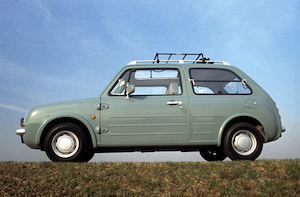
The Pao was the second car and designed with a safari in mind!
Q7 – Back in 1987, your second car design named the ‘Pao’ was released. It was the year after the Be-1 was launched so were you working on these two projects at the same time?
No because the Tokyo Motor Show was only held once every two years. However, I got the idea for the Pao project after I saw a brand called ‘banana republic’ that sold clothes which had the feeling of travelling or safari.
My idea was to transfer this concept to an automobile. However, the impact of Pao was not strong as Be-1.
Q8 – What were your thoughts as to why the Pao did not sell as well?
It is often said that ‘your first work is the best work’, so your point is true. Looking back, I think that only an amateur can make major changes to the world, professionals are more suited to small improvements. In the early 80’s, all the cars were ‘box-shaped’. But, just one round-shaped car called the ‘Be-1’ changed the trend from ‘box’ to ‘round’. I experienced this dynamic market change and I thought this impact was stronger than design perfection which at the time was only recognised by design specialists. The Be-1 changed the world by design power. On the other hand, PAO was a second design and is still a very enjoyable car. If Be-1 had not been released, we could not have produced the PAO. But I loved PAO design, and I actually drove it recently.
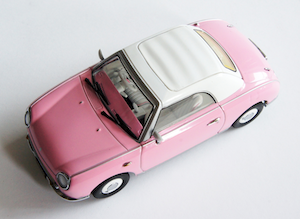
The Figaro was the third car from the Pike Series. Here is a model prototype at the time.
Q9 – This gets us to the important question for us. What do you think of the Figaro in design terms?
I still really like the design. One of the issues in the design was strengthening the chassis as the car is a convertible, so the weight is heavy within the body.
The extra weight meant we had to add a ‘turbo’ to the engine as it helps performance. If you look at the Pao and Be-1 you can see the influence of our early proposal for interior design.
We know that the car still has a big following especially in Britain and has been owned by Eric Clapton and Noel Gallagher (ex. Oasis). The final design of Figaro was by Jun Shimizu.
“Our intention was to make the Figaro feel like a ‘Small Daimler”
Q10 – In 1992 the economy in Japan fell into recession. Therefore, the release of a ‘Pike Car’ and the bubble economy before this occurred in same time. Did the bubble economy affect your activity with Nissan?
I think that ‘efficient’, ‘rational’ & ’functional’ industrialised society ended in 1970’s and post-industrialised society (post-modern society) begin. Consumers are not moved by manufacturer or factory convenience. Traditional ‘Product-out’ methods had shown the limitations, and the period of ‘Market-out’ method had begun. I felt that I must start to produce products for the staff of my company Water Studios, who were starting to see the sign of the bubble economy at the time. If you look back, the Be-1 was sold for 1.3 million yen originally, but 2 months after, it was being sold by over 3 million yen in the used car market!
Q11 – In the 90’s, product design was also being affected by the Japanese recession. What was your activity at the time?
We working on various projects with Shunji Yamanaka and young French designer Gwenael Nicolas. The product designers of their generation have high computer skills, and introduced concept of ‘interface’ or ‘interaction’ to design. Hiroshi Kashiwagi named it ‘The age of immaterial design’ These designers started to talk about items and people, society and people, information and design, technology and art. Manufacturers cannot create new product by material value. The internet age was coming. The car became a mobile terminal, which moves both of real and virtual worlds by using their engine and car navigation system. Therefore, products have to challenge to fit for IT society.
Q12 – After the long the boom to bust period, design started a boom again in 2000’s. Naoto Fukasawa’s design brand had a similar concept to your Pike car series. What do you feel about this trend?
I met Mr.Fukasawa in 1991, when he worked at IDEO in San Francisco. His boss, Bill Moggridge introduced him and he is an excellent designer. I feel that Mr.Fukasawa and me shared the same sense of humour. I do not regard that the designs have a similar concept, but I am happy that the gene of ‘Pike cars’ is continuing to next generation.
Q13 – Let’s get back to talk about Nissan. After Carlos Ghosn achieved a turnaround, new ‘Cube’ or ‘March’ had released. How do you see Nissan now?
Shiro Nakamura, the top of design section in Nissan can communicate with Ghosn directly and fasten the decision making. This brought good result to Nissan. When the profit downs, design is daunted. But now, the Nissan design is not hesitating. Cube or March is ‘Japanese design’ and I like it. I also see the Figaro and Pike car gene in it so I am so happy.
Q14 – The profession of person who ‘Concepts’ a car is recognised but does not have the power of say and advertisement director. Do you have any proposal for the relationship between company and this person?
I do not know much about many cases, but I heard that Toyota has many people who ‘concepts cars’ in product planning and they have power like an ‘art director’ in product design section. My personal opinion is that one person should make the decision for design rather than democratic decision. Design is not drawing sketches.
Q15 – In the recent decade, we can see problems with ‘concept’ to ‘product design’, for example, ‘universal design’ & ‘sustainable design’. What is the most important problem today or are there any unexpected problems?
Universal design, sustainable design, ecological design… Manufacturer and designer make solutions for social problems. This is quite natural, I think. Unexpected area of design may be designing industrial system or market. Important function of design is imagination for everything. Sottsass wrote interesting article for Domus and saying ‘When we design products, the product must help people to realize something or liberate him/herself. Designers must think how we add a function that makes people excited’. I think that the 60’s was the beginning of this era and today History is repeating itself.
Naoki Sakai
Below is a print of an interview by Chee Pearlman and published in the 1990 MAY/JUNE editions of ID
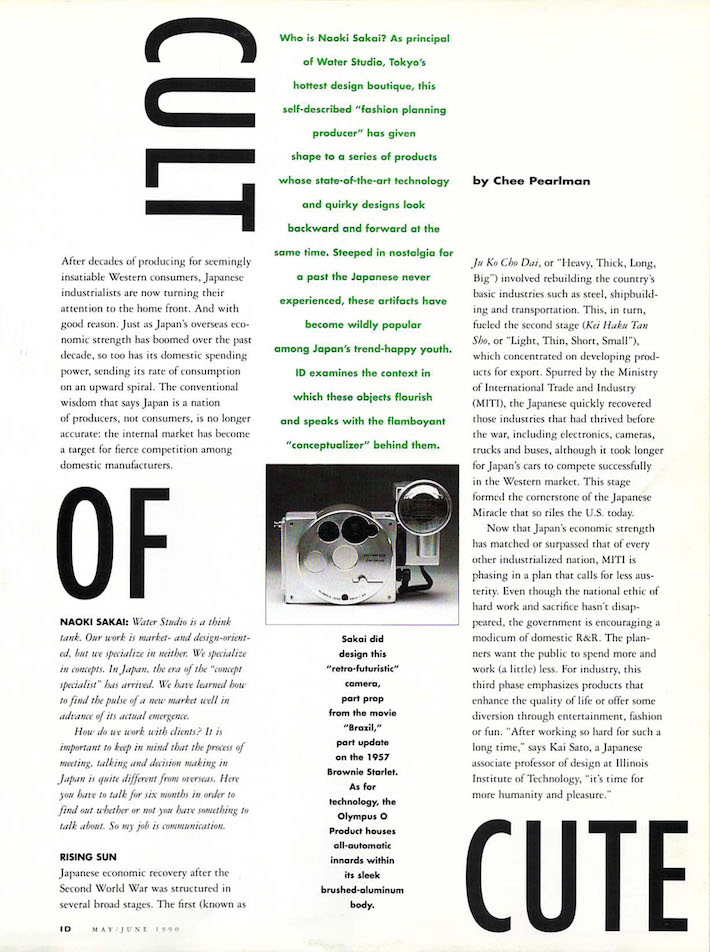
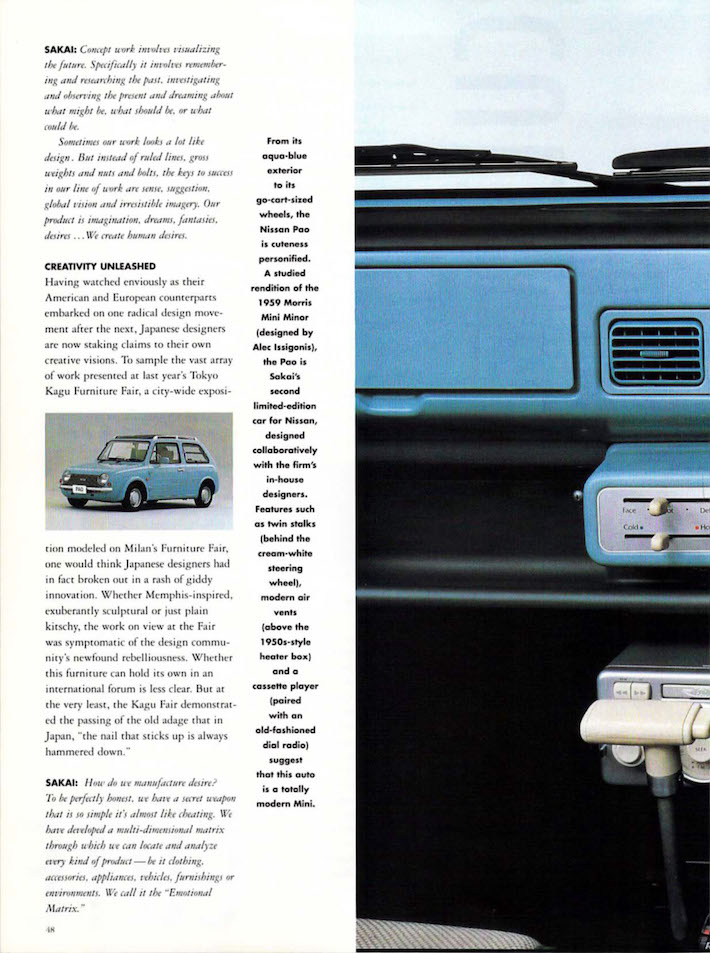
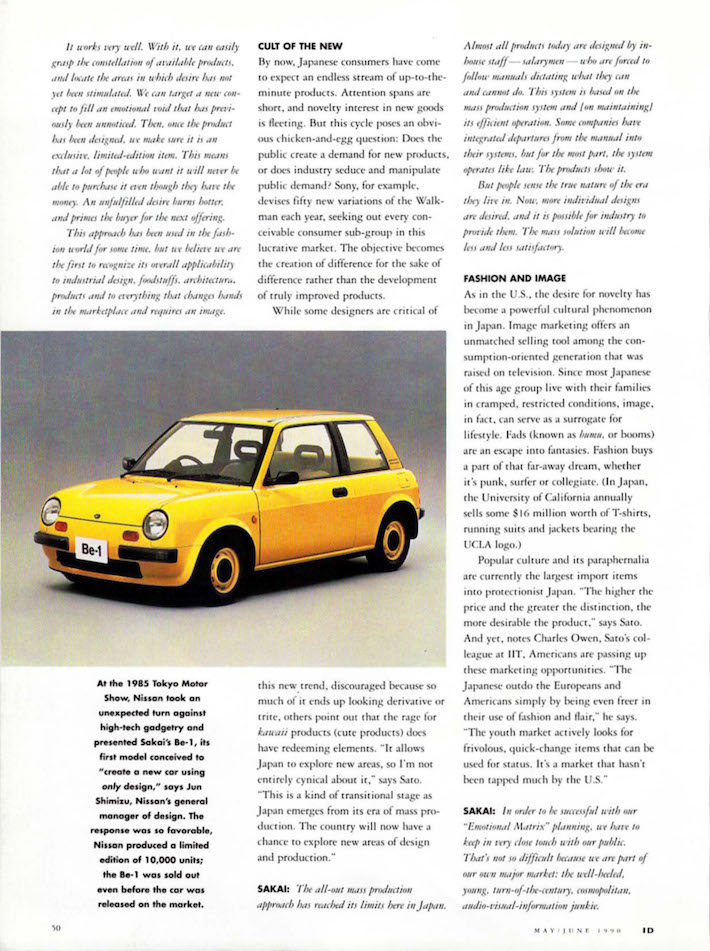
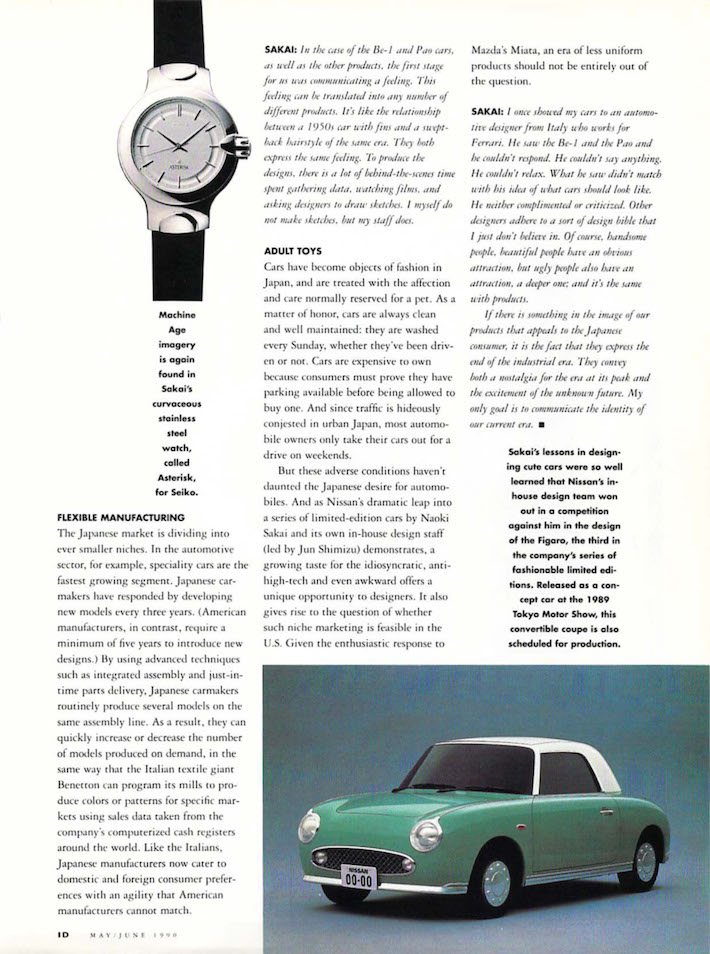
Below is a print of an interview by Daniela Bezzi and published in the 1991 JULY/AUGUST editions of Blueprint
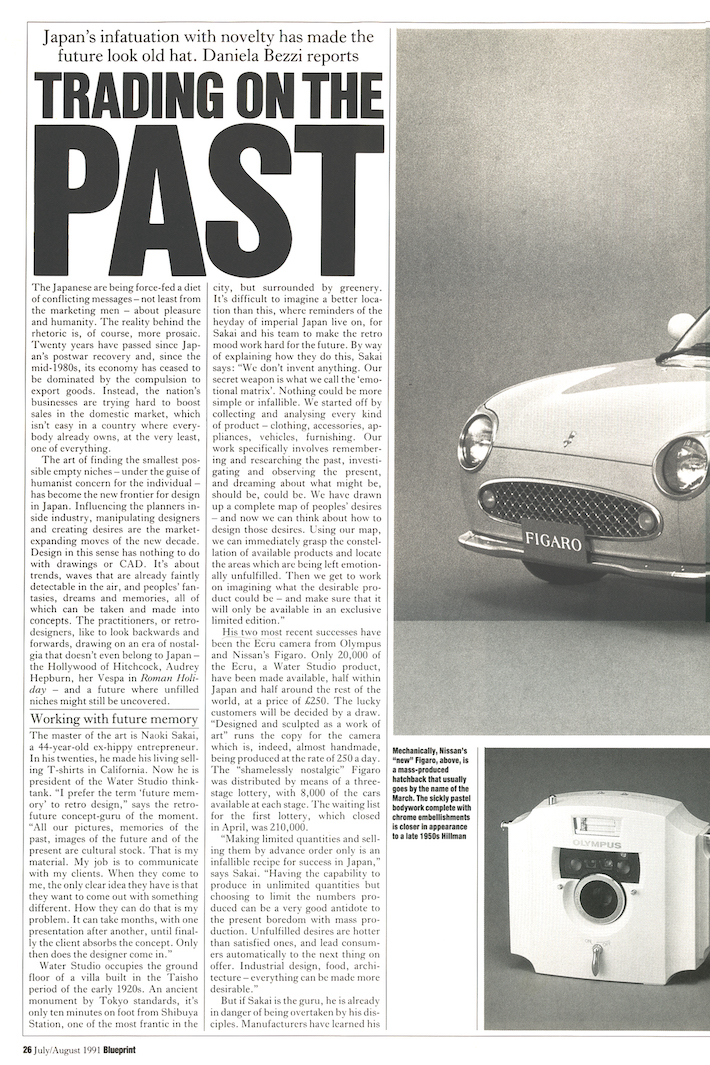
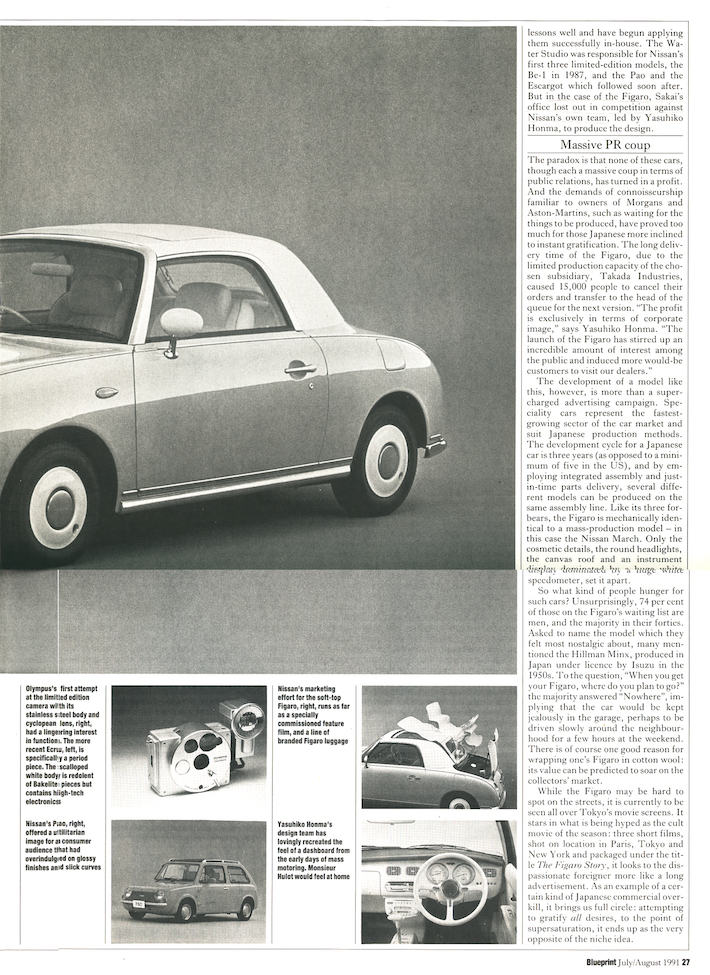
Below is the products designed by Naoki Sakai and the Water Studio
